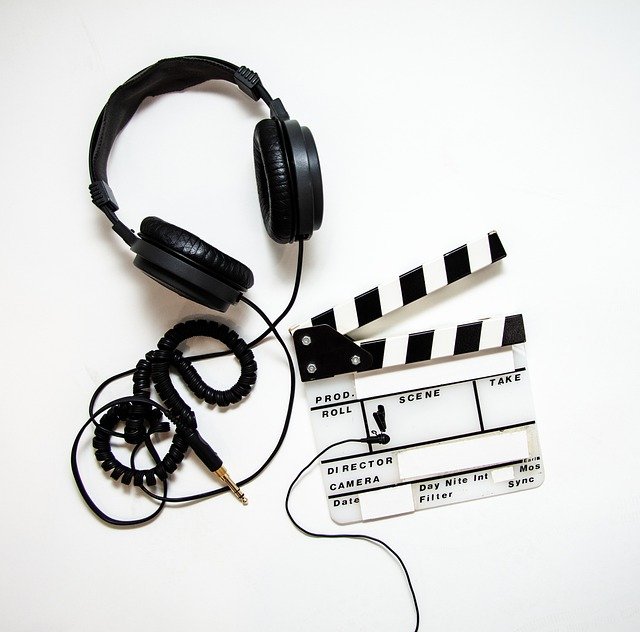The Cinematic Symphony: Orchestral Scores in Modern Film
In an era dominated by digital soundscapes and synthesized melodies, the resurgence of orchestral scores in contemporary cinema has sparked a fascinating dialogue about the power of traditional music in visual storytelling. This unexpected renaissance has not only breathed new life into the art of film composition but has also redefined the relationship between sound and image in ways that challenge and inspire both creators and audiences alike. As we delve into this harmonious revolution, we uncover the intricate interplay between classical orchestration and cutting-edge filmmaking, exploring how this fusion is shaping the future of cinematic experiences.

Filmmakers and composers alike have rediscovered the unparalleled ability of orchestral music to evoke emotion and enhance narrative depth. The rich textures and dynamic range of a full orchestra provide a level of nuance and complexity that can elevate even the most visually stunning films to new heights of artistic expression.
Technological Advancements and Orchestral Integration
While the return to orchestral scoring might seem like a step backwards technologically, the reality is quite the opposite. Modern recording techniques and digital tools have allowed composers to blend traditional orchestration with contemporary sound design in ways that were previously impossible. High-definition microphones, sophisticated mixing consoles, and advanced audio software have given birth to a new hybrid form of film music that marries the warmth of acoustic instruments with the precision and flexibility of digital production.
This technological synergy has opened up new possibilities for composers, enabling them to create scores that are both timeless and cutting-edge. The result is a sonic landscape that feels both familiar and fresh, capable of supporting a wide range of cinematic styles and genres.
The Impact on Storytelling and Audience Engagement
The resurgence of orchestral scores has had a profound impact on the way stories are told on screen. Directors and composers are now collaborating more closely than ever, using music as an integral part of the narrative rather than simply as background accompaniment. This approach has led to more immersive and emotionally resonant film experiences, where the score becomes a character in its own right, guiding the audience through the story’s emotional journey.
Audiences, in turn, have responded enthusiastically to this renewed focus on orchestral music. The rich, multi-layered soundscapes created by full orchestras provide a depth of experience that resonates with viewers on both conscious and subconscious levels. This has resulted in a greater appreciation for film music as an art form, with soundtrack albums and live concert performances of film scores gaining popularity among cinephiles and music lovers alike.
Challenges and Controversies
Despite its many benefits, the return to orchestral scoring has not been without its challenges and controversies. Some critics argue that the trend represents a regression in film music, favoring nostalgia over innovation. Others point to the significant costs associated with recording full orchestras, which can be prohibitive for smaller productions and independent filmmakers.
There are also concerns about the homogenization of film music, with some arguing that the widespread use of orchestral scores has led to a lack of diversity in cinematic soundscapes. This has sparked debates about the importance of balancing tradition with experimentation and the need for more varied approaches to film scoring.
The Future of Film Music
As we look to the future, it’s clear that orchestral scores will continue to play a significant role in shaping the cinematic landscape. However, the most exciting developments are likely to come from the ongoing fusion of traditional orchestration with new technologies and diverse musical influences.
Emerging composers are already pushing the boundaries of what’s possible, incorporating elements of world music, electronic genres, and experimental techniques into their orchestral arrangements. This cross-pollination of styles and approaches promises to keep film music fresh and relevant for years to come.
Additionally, advancements in virtual reality and immersive audio technologies are opening up new frontiers for orchestral scoring. As cinema evolves to embrace more interactive and multisensory experiences, composers will have unprecedented opportunities to create soundscapes that envelop and transport audiences in ways we can only begin to imagine.
The resurgence of orchestral scores in modern film represents more than just a nostalgic return to the past. It is a dynamic and evolving movement that combines the timeless power of symphonic music with the innovations of the digital age. As filmmakers and composers continue to explore the vast potential of this harmonious fusion, audiences can look forward to ever more captivating and emotionally resonant cinematic experiences. The orchestral renaissance in film is not just a passing trend, but a vibrant and ongoing dialogue between tradition and innovation, promising to shape the future of cinema in profound and exciting ways.





